It’s fright night! I bet you thought I couldn’t combine Hallowe’en and mules, but it turns out that there are several mule-related monsters to be found around the world – and I mean actual monsters, not just Marty when he’s having a bad day*.
*Although a lot of these creatures have a Spanish origin – just coincidence? Hmm!
Here is a list of my top five creepiest mules:
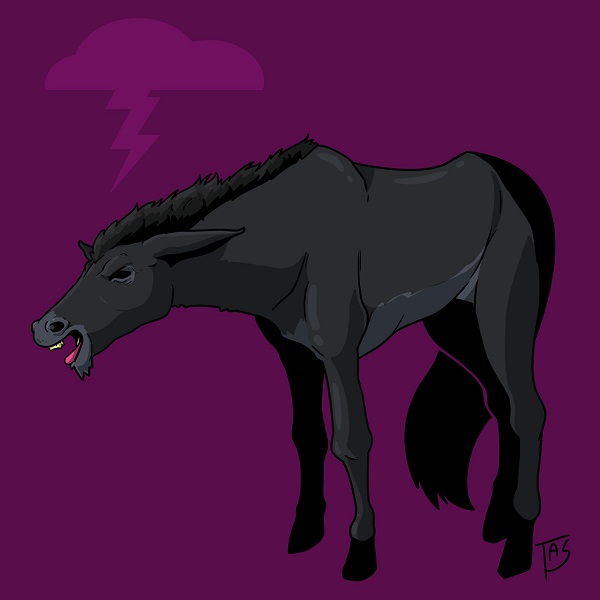
5. Mula Retinta
The mula retinta, or dark mule, comes from Colombian folklore and is an evil spirit that appears before mule trains on precipitous paths. It creates strong winds and storms that cause the unfortunate muleteers (or “arrieros”) and their animals to fall from the trail. Some sources say that the mula retinta is also the favoured steed of the devil.
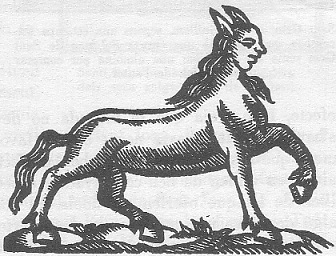
4. Muladona
The muladona, from Catalan mythology, is mule-shaped in appearance but her face is strangely human and her mane appears more like a woman’s hair. She takes this form after being cursed by her fellow townspeople for being irreverent and irreligious (well, damn – I guess I’m doomed). This one appears to be a full-time curse, although the muladona is particularly active at night. Much like the mula retinta, she favours mountain roads and will join up with mule trains, causing them to stampede. To prevent their mules from panicking, muleteers would start the trip by giving them small, muladona-shaped pieces of bread to eat.
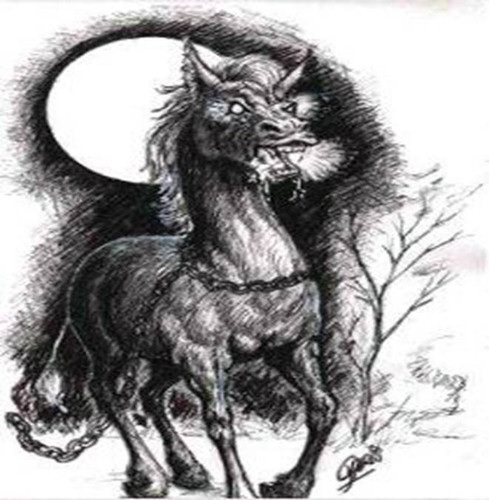
3. Almamula / Runa-Mula
The almamula originates in Argentina. It is a monster that appears as a result of incestuous sex; the woman, who is apparently the only one at fault in this situation, transforms into the sorry creature at night (other sources say that her spirit merely manifests as the almamula, while the woman herself remains in a deep, unwakeable sleep). The almamula is draped in heavy chains that pull on her mouth and must drag them with her as she wanders, wailing and shrieking her pain. Only an axe blow to the ear can defeat the curse; once done, she will run home and the trail of blood must be followed to discover the human source. Some traditions state that completing this ritual will redeem her soul and allow her to enter heaven. As far as I can tell, the man with whom she had incestuous sex just gets on with his life.
The runa-mula story is quite similar to the almamula. From Amazonian legend, it is the punishment laid on a woman who commits adultery. During a full moon, a mysterious rider dressed in black robes will appear outside the woman’s home and weave a spell that turns her into a half-mule, half-human creature. Unable to resist the lure of his words, she follows him. He will then beat her terribly, and her cries will alert the village to her crime. In the morning she will have taken human form again and will remember nothing of the previous night, but she will be covered in wounds and bruises.
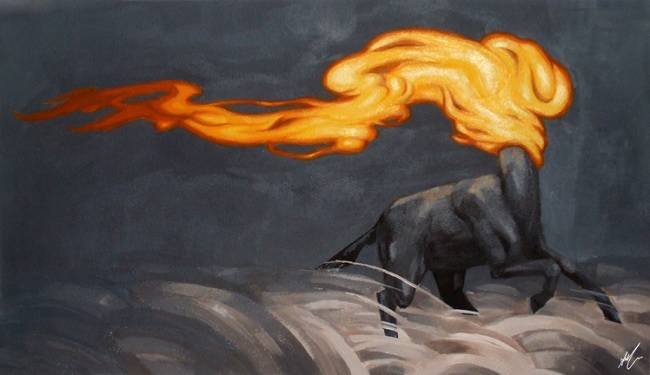
2. Headless mule
The headless mule story comes from Brazilian folklore and – you guessed it! – is yet another woman transformed into a monster as punishment for her sins. In this case, these sins can range from infanticide to having a sexual relationship with a priest. Basically, what I’m learning from this research into monstrous mules is that women are always the provocateurs and men just can’t help being lured into these situations. That makes sense, right? Right??
Oops, sorry, I was talking about folkloric monsters. The headless mule is indeed headless, but it can still bray – or sometimes wail like a crying woman – and it wears a red-hot iron bridle on its non-existent head. Fire billows from its severed neck and its silver-shod feet produce a tremendous drumming noise as it runs.
Cursed to gallop across seven parishes from sunset to sunup, the headless mule can be returned to human form by either spilling its blood with a needle (in which case the curse will remain lifted so long as the benefactor is alive and living within the same parish), or by tying her to a cross (in which case the woman will remain in human form until dawn, but will transform again the following night). A longer term solution is to remove the burning bridle, which means that the woman will not transform again so long as her benefactor is alive.
If you should encounter a headless mule, do not try and engage it unless you think you can remove the bridle or spill its blood; otherwise, it will chase you down and trample you. The best response is to lie face down on the ground, making sure you cover your teeth, nails, and anything that shines. The headless mule does not have good eyesight (a side-effect of being headless, I suppose) and will probably not notice you if you stay still.
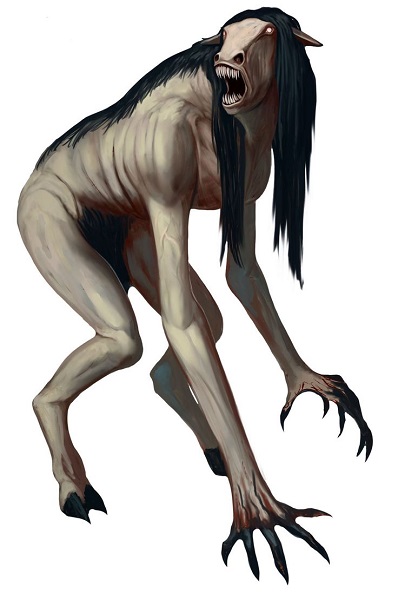
1. Tikbalang
I’m very pleased to say that the Filipino tikbalang, although horrifying, is not a cursed woman and has always been a monster – or perhaps even an elemental god – in its own right. The mule is just one of their aspects; they can appear as many different animals, but are usually equine. It has a humanoid (although vastly distorted) body and the head and feet of its chosen animal.
Tikbalangs are tricksters and are associated with sparsely-populated, heavily wooded areas. Often found standing at the base of a large tree, on the lookout for anyone who may bring malicious intent to their kingdom, they like to lead travellers astray and get them lost – curiously, this can be counteracted by wearing your shirt inside out.
Their mane is made from sharp spines, and if you manage to obtain one of these spines then the tikbalang will become your servant. However, subduing the tikbalang in order to get a spine from its mane is no easy feat: you must lasso it with a specially prepared cord, and then cling to it’s back while it flies through the air attempting to dislodge you. Alternatively, while you’re up there you can search for three golden hairs among its mane. If these are plucked before the tikbalang kills you, then it will serve you until it dies.
Another story about the tikbalang says that it coerces travelers into following it by taking on the appearance of a friend, or family member. Once deep among the trees, the tikbalang will begin to stumble drunkenly and a strong smell of tobacco will arise. This is then followed by the tikbalang shedding its human guise and the luckless traveler will know it for what it truly is. Giggling childishly, the monster will then slap and shove its victim, preventing them from standing, until the traveler stops resisting. The human will then find themselves alone, long after sunset, and will stagger home disorientated and with an overwhelming sense that the forest is closing in around them.
More disturbing versions of the tikbalang tale suggest that it procreates by raping human women, who then give birth to more tikbalangs. Other traditions state that it is the spirit of an aborted fetus, returned to earth from limbo, and that it drives people to madness.
Grounding the tikbalang in reality for a moment, it seems that the folktale may have originated with the conquistadors who introduced horses and mules to the Philippines in the 16th century, and who propagated the half-man, half-horse stories to keep the native people afraid of the night. This version of the tikbalang is much nastier than the forest trickster; it comes out only at night, has glowing red eyes, and when angered (which is easy to do) it will trample people to death. It is always accompanied by the smell of burning hair and, somewhat inexplicably, smokes big fat cigars.
You can watch a documentary on the tikbalang here.
So there you have it: the mule features surprisingly often in tales of the supernatural. Is it because it is sometimes seen as an unnatural creature? A hybrid created by man, rather than God?
Either way, I’m not what I find the most disturbing: all these monstrous creatures roaming the land, cursed to take long-eared form, or the deeply sexist beliefs that would cause such creatures to be dreamt up in the first place. More mula retintas and less muladonas, please!
